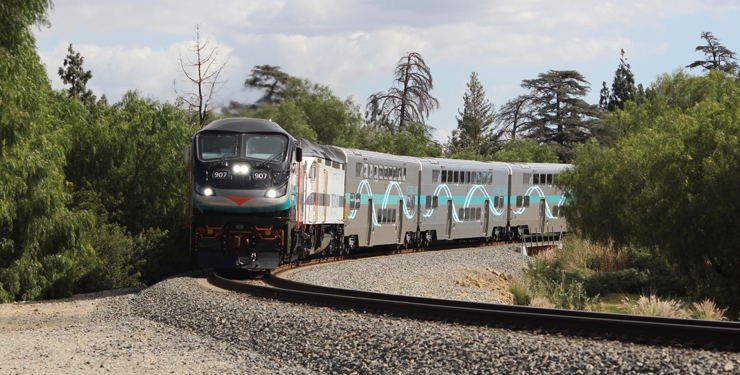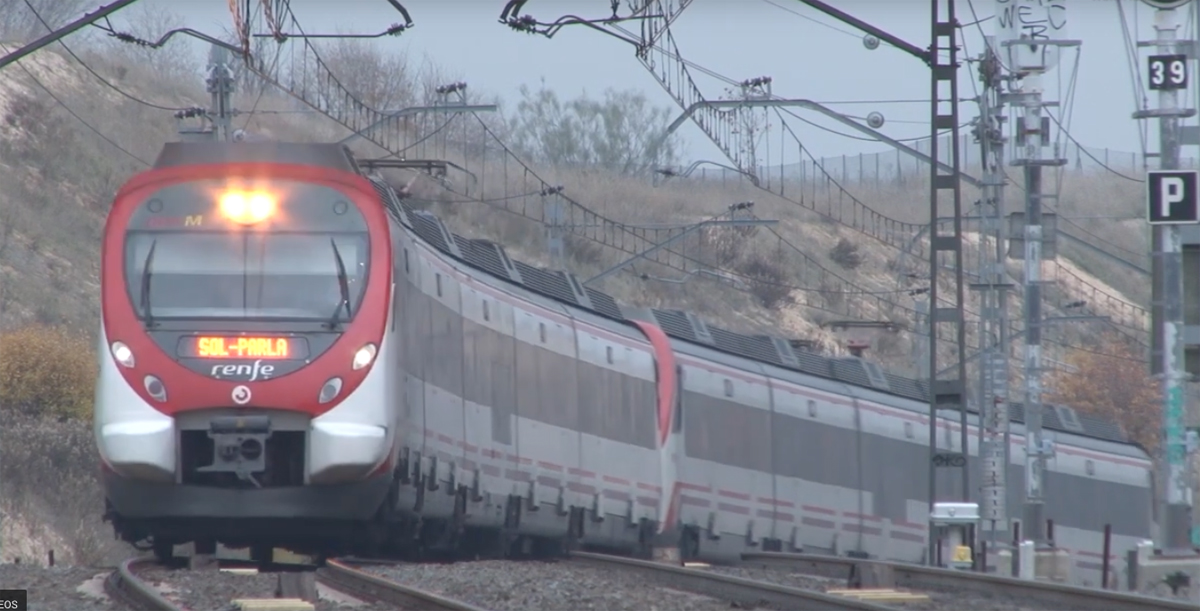Railroads and transit lines in California have long dealt with wildfires, which can delay or halt trains, but the latest fires have come with a new wrinkle: deliberate, pre-emptive cuts to electric power by utility companies whose transmission lines have been the cause of major fires.
The 2018 Camp Fire, the most destructive in the state’s history, was linked to a faulty power line owned by Pacific Gas & Electric. In January of this year, faced with $30 billion in liabilities, the utility filed for bankruptcy.
As wildfires erupted in September, PG&E announced plans to turn off power to vulnerable areas when dry conditions and gusty winds combine to increase the fire risk.
As the Kincade Fire, which ignited earlier in October and to date has burned more than 76,000 acres, advanced toward areas served by Bay Area Rapid Transit, the transit agendy faced the prospect of a shutdown that would cause havoc for its 400,000 daily riders.
In just the few days before PG&E began shutting power to three of the four counties BART serves, it found a way to redirect power from areas that were receiving electricity to supply traction power to areas where it had been turned off. To maintain critical systems such as signals, communications and tunnel fans, BART staff employed backup generators.
That kept the trains running. James Allison, a BART spokesman, said in an email, “The only impacts we have had related to the wildfires and public safety power shut-offs has been to our escalators.”
Amtrak’s Capitol Corridor trains were briefly stopped yesterday by a fire near Martinez. All service was restored today on Sonoma-Marin Area Rail Transit (SMART), which restarted limited operations yesterday. Rides remain free through Nov. 6.
As winds in Northern California began to wane this week, concern shifted to areas around Los Angeles. The Tick Fire, which began Oct. 24, threatened Metrolink’s Antelope Valley Line. Once more, electric utility outages added to the problem for railroad operators.
“Southern California Edison cut off power to a section of our Antelope Valley Line, and that was on Monday,” Metrolink spokesman Paul Gonzales tells Trains News Wire. “The power was shut off without any notification prior, so we had to scramble.”
Metrolink trains are diesel-powered, but communications and signal systems depend on electricity.
“Crews went out and installed portable generators at each of the control points, and other places needed to have batteries recharged,” explains Gonzales. “It became something that was important for us to handle in an expeditious way, in order for us to be able to accommodate our customers.”
Wednesday, violent winds, with hurricane-force gusts, combined with extremely dry conditions in Southern California, causing authorities to issue an “extreme red flag” warning. By 6 a.m., fast-moving flames emitted columns of gray smoke over Simi Valley, in sight of Metrolink’s Ventura County Line.
Today, trains continue to run along the line, which also serves Amtrak and Union Pacific, but speed restrictions are in place. The morning’s commute saw delays of up to an hour.
Metrolink has canceled some trains on the Riverside Line this morning due to a fire that broke out yesterday afternoon in the Jurupa Valley.
Earlier this week, Union Pacific spokesman Tim McMahan said fires have not disrupted UP freight service in California, but that’s because the railroad has redirected part of its workforce to keeping trains running despite electrical outages.
He said crews have “worked tirelessly over the past 48 hours placing generators across hundreds of miles to keep railroad signal systems and crossing gates active. A lack of precise information from PG&E made it difficult for the UP team to prioritize where to place back-up generators. We sourced generators from Oregon and Southern California at great expense to ensure the power outage did not impact our customers. We currently have either commercial power, generator power or are running on battery at all locations in the affected areas.”
Strong winds are expected to continue Thursday across the Los Angeles basin.
— Jody Meacham contributed to this report















Our wildfire and electricity problems in Northern California are profound, to be sure, but contrary to the implication in the story, the Kincade Fire in Sonoma, Lake and Napa Counties got nowhere near BART. SMART, yes; BART, no.
The power shutoffs in the East Bay that BART needed to be cognizant of (and had happened earlier in October as well) would have been implemented by PG&E regardless of the Kincade Fire.
Maybe they will ask BNSF to put out the fires, they already have to save the bears.
So both PGE and SCE need to have new leadership that knows what it’s doing…absolutely no reason to shut off power if they had followed the rules on keeping vegetation clear of power lines…and would bother to spend money on new transmission lines on the best place for them…right over the railroad right of way, then we could electrify all the mainlines in the state at the same time.
A well managed operation has the ability to adjust to difficult situations. And doesn’t complain just does the job.
It has to be challenging to operate a railroad sometimes. Next come the Locusts.